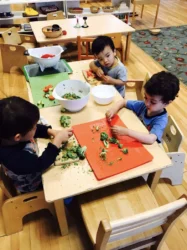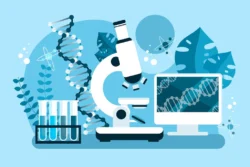A recent Washington Post op-ed, written by the Fordham Institute’s Michael Petrilli, pushed for the idea that schools should consider keeping kids in the same grade this fall. In a follow-up article aimed at adding clarity to his statements, Petrilli explains that his words were meant to spark creativity among schools regarding how they plan to handle the imminent gaps in education resulting from students missing nearly the entire last quarter of the school year.
In the article, Petrilli explains that there are two tenets in identifying the best course of action for improving student success. The first is the belief that the traditional education model, which focuses on grade-level standards, is the tried-and-true method of learning. Educators teach the material according to the grade level, with little remediation in filling in the gaps of prior years. This is the traditional learning method that has, for decades, kept students learning at the same pace as their peers.
Petrilli discusses two educational leaders and supporters of the traditional learning model, David Steiner and Daniel Weisberg of the 74, and their research-based belief that “meeting students where they are” can stigmatize students and reinforce inequities. The argument here is that when students return to school this fall, they should be given a real chance to do grade-level work to provide a better academic experience.
Contradictory to that is the personalized learning method, a modern approach to education. The personalized learning approach allows students to understand a concept fully before moving on to the next. This is the ideal solution for subjects such as mathematics, and Petrilli specifically calls out Joel Rose, co-founder and CEO of New Classrooms, the non-profit organization that developed an innovative solution to traditional learning, Teach to One: Math.
Teach to One (TTO) offers a unique, collaborative approach that is designed to meet students where they are, starting with an individualized assessment of each student. The approach empowers students to accelerate their own learning through various learning modalities such as independent work, group collaboration, and teacher-led instruction. Teachers are involved throughout, assisting students when necessary.
The dynamic approach to learning that TTO offers is breaking barriers to the traditional classroom learning environment. The Teach to One method is designed to target deeper levels of conceptual understanding of math skills and help students develop lifelong habits of success.
While the traditional learning method may be appropriate for other subjects, such as English, the Teach to One personalized learning approach is working in schools across the country, with data showing improvements in student participation and preparedness in mathematics.
Learning gaps have been present in the school system for years, so it is not simply a situation brought on by the pandemic. In the fall of 2019, New Classrooms released a paper entitled “The Iceberg Problem,” highlighting how exclusive focus on grade-level markers can hinder a student’s progress in math and accumulate as that student prepares for college or a career.
A few months later, Rose and David Weisberg shared insights on what must be done to prepare students for graduation and beyond. The article highlights four key areas that Rose and Weisberg believe, regardless of the learning method being implemented, are important in improving student success and ensuring that they are college and/or career ready:
● High expectations are essential for student success.
● Learning is cumulative.
● Educators need better support.
● Assessments provide accountability and improve growth.
There may not be one clear-cut answer to what schools should do as they prepare to bring students back in the fall, but what Petrilli, Rose, and Weisberg do agree on is that something must change in our current learning model. They agree that we must come together as educators, policymakers, and parents to ensure that students are on a path to success.
About Teach to One: Math
Founded in 2011, New Classrooms is an independent, national nonprofit that is on a mission to bring personalized learning to students across the country. Its innovative learning approach, Teach to One: Math, is an award-winning educational solution that has redesigned the traditional classroom learning experience. TTO creates content that engages students by meeting them where they are in their educational journeys. TTO uses an open-concept classroom and applies technology, independent learning, and collaborative learning to help students understand the daily curriculum.
Prior to launching Teach to One: Math, Joel Rose and Chris Rush, co-founders of New Classrooms, launched School of One, a middle-grade math solution designed to improve students’ learning experiences in NYC Public Schools. In 2009, School of One was named Best Invention of the Year by Time magazine. Teach to One: Math was built from the same principles as School of One and is now available in schools nationwide. Teach to One: Math ensures that students are learning the right math lesson, at the right time, and in the right way that meets their individual needs. To learn more about New Classrooms and Teach to One: Math, visit www.newclassrooms.org.
About the 74
The 74 is a non-profit, non-partisan news site covering education in America. Their mission is to lead an honest, fact-based conversation about how to give America’s 74 million children under the age of 18 the education they deserve. Their stories are backed by investigation, expertise, and experience. The 74’s reporting aims to challenge the status quo, expose corruption and inequality, and champion the heroes who bring positive change to our schools. To learn more about the 74, visit https://www.the74million.org







